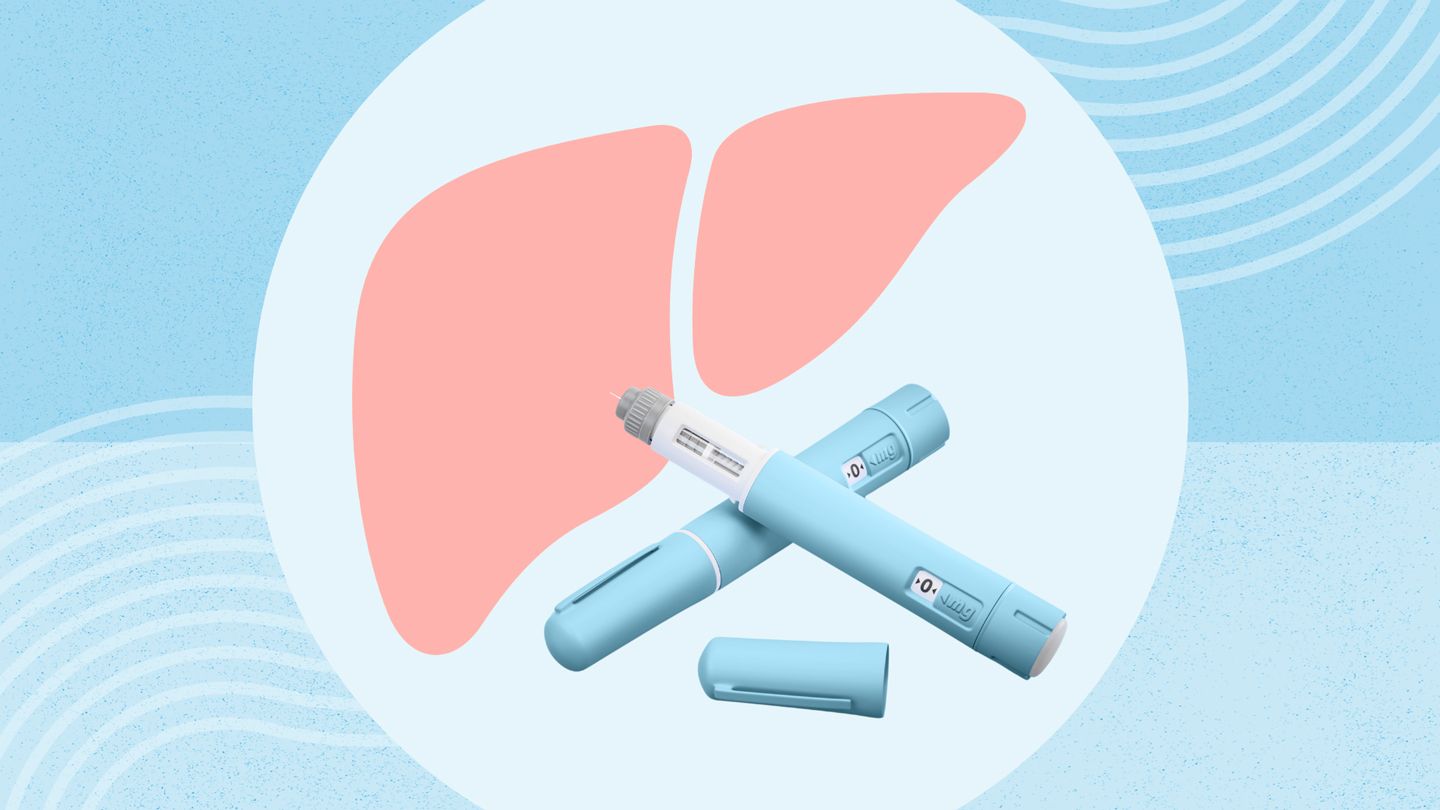People with a life-threatening form of advanced liver disease that could lead them to need a liver transplant may one day have a new medication option: semaglutide, the GLP-1 drug sold as Wegovy for weight loss and administered as a once-weekly injection.
MASH is a more severe form of MASLD, or metabolic dysfunction–associated steatotic liver disease, formerly known as nonalcoholic fatty liver disease (NAFLD). It is a long-lasting liver condition caused by too much fat in the liver.
MASLD is closely linked with obesity as well as conditions such as type 2 diabetes and heart and circulatory disease. Over time, the buildup of fat in the liver can lead to inflammation, fibrosis and cirrhosis (types of scarring), and liver cancer.
“It’s encouraging to see a medication that is already approved by the U.S. Food and Drug Administration for another indication showing improvement in liver disease,” says Marilyn Tan, MD, an associate professor of medicine and an endocrinologist at Stanford Health Care in California, who was not involved in the study.
“Though many of our patients with MASH and type 2 diabetes are already on GLP-1 agonists, if the FDA expands the indications of GLP-1 agonists to include MASH, this may expand drug eligibility for patients,” she adds. “However, insurance coverage frequently remains a barrier for the nondiabetes indications for GLP-1 agonists.”
Wegovy Reduced Liver Inflammation, Fat Accumulation, and Scarring
For the new study, researchers followed 800 people with MASH and moderate to advanced liver fibrosis. More than half had type 2 diabetes and close to 3 out of 4 had obesity.
Participants were randomly assigned to receive a once-weekly injection of 2.4 milligrams (mg) of Wegovy or placebo, alongside lifestyle counseling, over a 72-week period (nearly a year and a half).
Overall, investigators found that 63 percent of participants had a reduction in steatohepatitis (inflammation of the liver with fat accumulation in the liver) versus 34 percent for the placebo group.
At the end of the trial, 37 percent of people in the Wegovy group had less scar tissue in their liver than they did when the trial began, versus 22 percent of those on placebo.
Around one-third of patients taking Wegovy saw improvement in both liver inflammation and fibrosis, double the rate seen in the placebo group.
Sammy Saab, MD, MPH, the medical director of the Pfleger Liver Institute at UCLA Health in Los Angeles, who was also not involved in the study, says, “This is the first time there’s been a statistical difference in improvement of fibrosis in people on a GLP-1 agonist. So I think this will become an important additional tool to treat MASH in the future,” he says.
Scar Tissue in the Liver Is Especially Destructive
There is a major unmet need for effective medications for patients with MASH who have started scarring down their liver but haven’t progressed to cirrhosis, says the co-lead author of the study Arun Sanyal, MD, the director of the Stravitz-Sanyal Institute for Liver Disease at Virginia Commonwealth School of Medicine in Richmond.
Right now, Rezdiffra (resmetirom) is the only FDA-approved medication for the condition.
The hope is that with treatment, cirrhosis “and all its associated badness” can be prevented, says Dr. Sanyal.
Why is Wegovy’s ability to improve liver scarring a big deal?
“Metabolic dysfunction–associated steatotic liver disease is very common in the U.S. and across the globe — roughly 25 to 30 percent of the world’s population has this type of liver disease,” says Dr. Saab. But only a subset develop liver injury. “In those people, there’s a risk of cirrhosis, cancer, and liver failure. In fact, in the U.S. the second most common reason people need a liver transplant is MASH,” he says.
The best predictor for who will go on to have more serious liver disease is the amount of scar tissue, says Saab.
Wegovy’s ability to reverse fibrosis in 37 percent of people is important because that should translate to better outcomes and fewer people needing a liver transplant, notes Saab.
Weight Loss Is Not the Only Reason for Wegovy’s Positive Effects on the Liver
People on Wegovy also saw improvements in liver enzymes and other blood measures of liver fibrosis, as well as 10.5 percent weight loss.
Gastrointestinal issues were more common side effects in the Wegovy group, and included nausea, diarrhea, constipation, and vomiting.
Weight loss is definitely a large part of why the GLP-1 improves liver disease, says Sanyal.
But there are other ways the drug improves liver health outside of shedding pounds. “Weight loss doesn’t always guarantee improvements in fibrosis,” he says.
Although it wasn’t formally tested in this study, it’s likely that the drug improved the health of the fatty tissue and reduced inflammation as well, says Sanyal.
Even with these impressive findings, it’s important that doctors not assume that people on a GLP-1 will have fibrosis reversal, he says. “It remains important to monitor and evaluate patients for advanced fibrosis,” Sanyal says.
Study Limited by Lack of Diversity
The authors acknowledged that the trial lacked diversity. Most participants were white, and only five people in the trial were Black.
The high performance of the placebo group was somewhat surprising, says Wajahat Mehal, MD, DPhil, a professor of medicine and the director of the Yale fatty liver disease program in New Haven, Connecticut, who was not involved in this study.
The placebo group did receive “standard of care” lifestyle and diet counseling but nothing out of the ordinary, says Sanyal. The idea was to compare people taking the drug to those who didn’t. Introducing intensive or extensive lifestyle interventions would have skewed the findings, he notes.
Wegovy May Provide a ‘Holistic’ Approach to Treating Liver Disease
This new evidence suggests that Wegovy could be an important treatment option in the future for MASH, though it is not yet FDA-approved for this use.
Because Wegovy improves many aspects of cardiometabolic health — obesity, glycemic control, and prediabetes — it treats the root cause of liver disease and provides a holistic therapeutic approach, wrote the study authors.
Theoretically, it’s likely that GLP-1s could help people with early liver disease and keep them from progressing to more advanced disease, says Sanyal.
“While our findings are highly encouraging and a major step forward, much more work remains to be done so that all patients benefit and can improve their disease state,” he says.
Read the full article here




